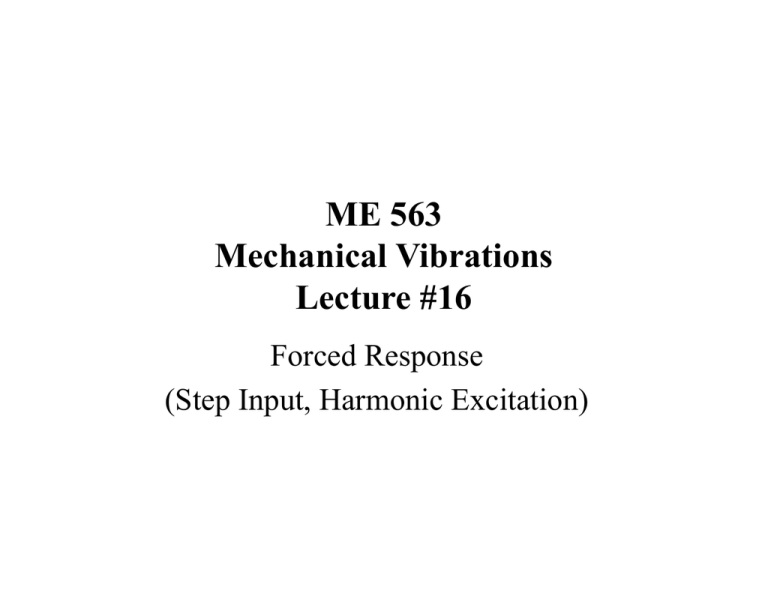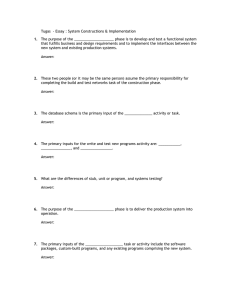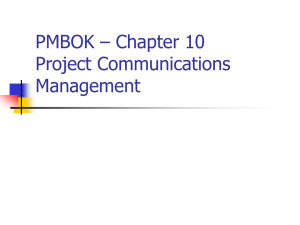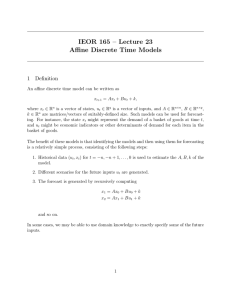Lecture #16 Forced response to step and harmonic excitations
advertisement

ME 563 Mechanical Vibrations Lecture #16 Forced Response (Step Input, Harmonic Excitation) 1 Free + Forced Response Because the equations we are solving are linear in nature, we can simply add the free and forced response components to obtain the total (general) solution to the equations of motion: Now we will consider several different forms of f(t). 2 Each Part of the Solution 3 Step Inputs If we release the disc on an incline from the position x=0, the response we obtain is the step response to a constant input. + Complementary Particular 4 Step Inputs After applying zero initial conditions, the following solution is obtained: 5 Step Inputs Transient response S.S. response 6 Step Inputs In MATLAB, we use the step(sys) command to calculate and plot the step response. 7 Harmonic Inputs Every periodic input force, f(t), can be described exactly over one period, t=0 to T sec, using a Fourier series: Real Fourier series Complex Fourier series Therefore, we can calculate the steady state response to any periodic force using a sum of responses to sinusoidal forces. 8 Harmonic Inputs If we consider a cosinusoidal input force: and assume the response is of the form, xp(t)=Xpcos(ωt+φp ) then: 9 Harmonic Inputs If we consider a co-sinusoidal input force, : then the relative amplitude and phase of the response are: xp(t)=Xpcos(ωt+φp ) 10 Frequency Response Functions Normalized expressions using modal parameters Sometimes called Bode Diagrams 11 Total Response As with the step response, we now must add the steady state (particular) response to the free response to obtain the total response expression: 12 Some Examples (C=0)… Resonant response of undamped system Response near a resonant frequency of vibration






